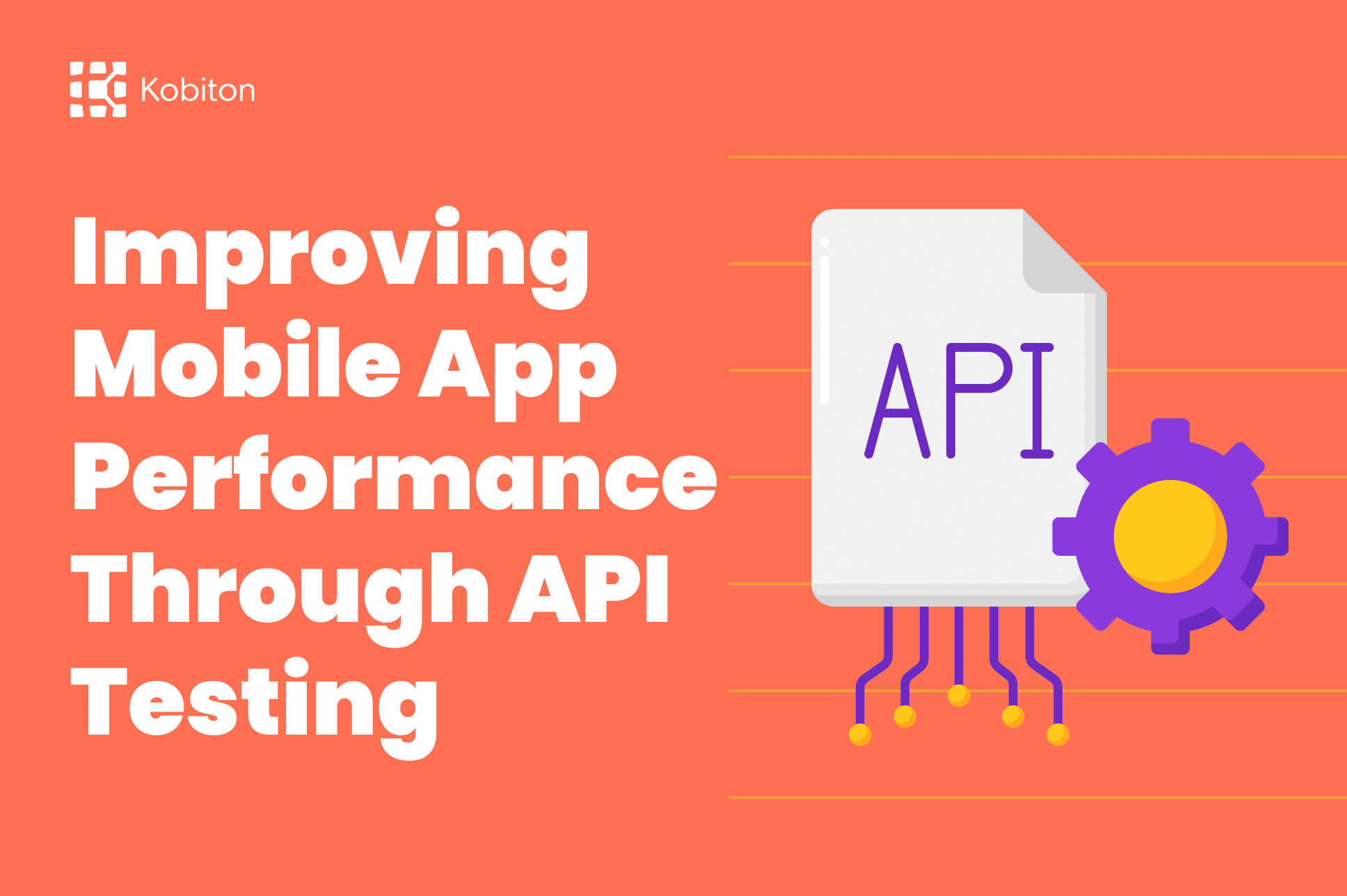
Improving Mobile App Performance Through API Testing

Cara Suarez
The transformation brought about by digital advancements, especially mobile applications, is remarkable. As per a report by Statista, the globe currently boasts over 6 billion smartphone subscriptions, a figure set to rise to nearly 7.7 billion by 2027.
This spike in smartphone usage has sparked an insatiable demand for mobile applications, drastically changing how businesses and customers interact. It’s fascinating to see how these apps have simplified the complex web of human connectivity.
However, to truly grasp their impact, it’s essential to delve into an often-underplayed process that is the cornerstone of any successful mobile application – mobile app testing.
When we speak of mobile application testing, we’re referring to a stringent process that ensures an app is robust, user-friendly, and behaves as anticipated before its release. This process involves putting an application through its paces to verify its technical prowess, business capability, and potential to offer a delightful user experience. This rigorous examination of applications is paramount in mitigating the risks of significant glitches that could sour the user experience.
The focal point of mobile application testing is identifying roadblocks that might hinder the user experience. Think along the lines of bugs, crashes, or performance issues. We can iron out these issues effectively by employing well-designed app testing strategies and the right mobile testing steps , thus fortifying the application’s reliability, usability, and consumer appeal.
The primary reason for creating mobile apps is to broaden business horizons by reaching more users worldwide. Yet, an app riddled with bugs or providing a poor user experience will likely fall out of its audience’s favor. As we’re well aware, first impressions can make or break an app’s reputation. A sudden crash or a glitch in functionality can cause users to abandon the app, translating to lost customers and dwindling revenues.
Consider this: statistics reveal that 80% of users discard an app that exceeds expectations. Moreover, 50% of users quickly uninstall apps that take up too much storage space, while 48% give up on those that lag. These figures drive home the importance of thorough mobile app testing.
The journey of mobile application testing is a step-by-step process. It begins with planning and control, analysis and design, implementation and execution. The following steps involve evaluating the exit criteria, reporting, and concluding with test closure activities. To streamline this process, there’s an array of mobile app testing techniques and tools, including Appium, TestComplete, Robot Framework, Espresso, and Xamarin.UITest, and XCUITest.
The planning phase is where we map out the objectives, methods, and scope of the testing. During the analysis and design phase, we identify test conditions and design test cases to ensure all app features are meticulously covered. Following this, we execute these test cases in the implementation phase. We then compare the actual and expected outcomes to spot discrepancies.
Evaluating the exit criteria involves determining whether the pre-set exit criteria have been fulfilled. If these criteria are met, we can conclude the testing. The final stage, test closure, includes wrapping up the testing, archiving data, and extracting valuable lessons for future projects.
Mobile application testing is a linchpin in today’s digital landscape. By enabling the delivery of high-quality mobile apps, businesses can offer optimized user experiences, a game-changer in the highly competitive realm of mobile applications. Ultimately, adequate mobile app testing is the secret sauce for meeting user demands and offering stellar user experiences.
In the constantly evolving landscape of mobile applications, establishing efficient and robust app testing strategies is fundamental to ensuring the success of an app. These strategies aim to ensure flawless performance across various platforms, enhance user experience, and secure sensitive user data, among other vital aspects. This section provides a deep dive into the most effective strategies for mobile app testing.
With users having the liberty to choose from various devices and operating systems, ensuring the app’s seamless performance across these platforms is crucial. Testers can use emulators alongside physical device testing to make this process more cost-effective and yield excellent results.
Security testing is necessary since users often share important sensitive data through their devices. A robust security testing strategy involves understanding the platforms on which the application will run and identifying potential attack vectors. Moreover, it includes developing multiple defense mechanisms and testing the app from an attacker’s perspective to better understand the weaknesses and possible exploits.
While many users may have access to high-speed internet, a considerable number still need to be challenged by inconsistent network reception and low-speed internet. In such scenarios, testers must ensure the app’s consistent performance across different network speeds and conditions, from 1G to LTE to WiFi, and consider sudden network changes and even disconnections.
Different devices come with different specifications and dimensions. Screen size is critical in testing as it can reveal bugs that negatively affect the app’s layout and, ultimately, the user’s digital experience.
Several apps leverage battery-intensive processes, such as storing and sharing heavy data, streaming content, and using geolocation elements. Thus, testers need to identify the parts of the app that consume the most battery and modify those accordingly.
Users often refrain from installing apps that consume too much space. Thus, developers and testers must focus on optimizing the size of the app without compromising its usability and offerings. Furthermore, they should ensure that the app size does not exceed a specific limit with each update or new release.
A plethora of permission requests from an app can raise privacy concerns among users. Testers need to ensure that the app doesn’t seek any permission that isn’t necessary for its functionality. Moreover, the permission screen for any eliminated feature of the app should be removed.
App upgrade testing ensures that the app runs smoothly during an upgrade due to a mismatched version number. It also verifies the retention of user preferences and saved data across different versions.
Performance testing is a vital element in the app testing pipeline. It checks the application’s response time and latency across numerous scenarios and use cases, particularly under heavy user load.
Creating a high-quality mobile application requires a thorough, step-by-step testing process that ensures all aspects of the app’s functionality, usability, and security are up to standard. By examining and integrating ideas from both the BrowserStack and Testrig Technologies articles, we can define this comprehensive process in more detail:
The process begins by outlining the testing strategy, including determining prerequisites, identifying the targeted devices, figuring out the app type, and creating a test plan for the cases that need to be executed. Deciding on the manual or automated testing type is essential at this stage. Automation is beneficial for frequent use cases, tests with predictable outcomes, tests needed for various devices, and unit testing.
Manual, automated, and cloud simulator testing ensures the mobile application performs optimally across all Android and iOS devices. This approach helps uncover potential defects and ensures the app meets its objectives.
Test cases, which consist of a series of steps to execute a specific app test, are crucial to the process. While test cases are used during manual testing, test scripts find applications in automation testing. These are designed according to the mobile app’s scenarios.
The testing environment comprises the codes and devices used for mobile app testing, and its configuration depends on the app in question. Ensuring the proper test environment setup is vital for the success of the testing process.
The core functionalities of the app are evaluated through manual and automated testing. This stage is critical for identifying and rectifying flaws for the enhanced performance of the application.
The app undergoes usability testing to confirm it’s easy to use, effective, and satisfactory for end-users. UI testing ensures the app features a simple, intuitive interface that users can effortlessly navigate and operate.
This stage tests the application across various browsers, devices, networks, and operating systems to confirm compatibility. It verifies that the app works well across all platforms and configurations.
The app’s stability, interoperability, and other vital aspects are checked under load conditions and usage scenarios. This testing process validates the app’s working capacity, response time, and overall performance.
The overall security of the app is verified during this stage. This includes analyzing potential risks and preventing unauthorized access to ensure the app’s safety and the security of sensitive user data.
Usability testing checks if an app’s features function as intended and are convenient for users. Beta testing allows users to test the application, helping developers understand which features users need and the app’s direction.
After all testing stages are complete, an end-to-end testing sprint is run to ensure the application functions as expected on the server level and backend. If there are any issues found, they are fixed, and you can repeat the end-to-end sprint.
The digital revolution, powered by a surge in smartphone usage and the accompanying mobile applications, has transformed our world in ways we are just beginning to understand. However, to ensure these mobile apps truly harness their potential, a critical and often overlooked process requires rigorous mobile app testing.
The goal of mobile app testing is simple: building robust, user-friendly applications that exceed user expectations and deliver a delightful experience. But achieving this goal demands meticulous attention to detail, employing sophisticated strategies and tools to iron out potential glitches and enhance the app’s reliability and appeal.
Evidence shows that 80% of users will likely abandon an app that doesn’t meet their expectations, so the stakes in mobile app testing have never been higher. Sophisticated testing strategies are essential.
From cross-platform testing to performance testing, security to network connectivity, every aspect is vital to creating a seamless app experience. Factors such as battery life, app size, privacy-focused permission settings, and application upgrade scenarios must be considered.
Mobile app testing is a process and a fundamental driver of app quality, business growth, and customer satisfaction. It’s the secret ingredient that separates a good app from a great one, a satisfactory user experience from an exceptional one.
At Kobiton, we offer a solution for organizations seeking to expedite their app release cycles while maintaining the quality of user experience. As a mobile-first testing platform purpose-built for enterprises, Kobiton provides exceptional service, platform capabilities, and product stability. Reach out to us today to learn how we can enhance your mobile app testing process and elevate your user experience to new heights.